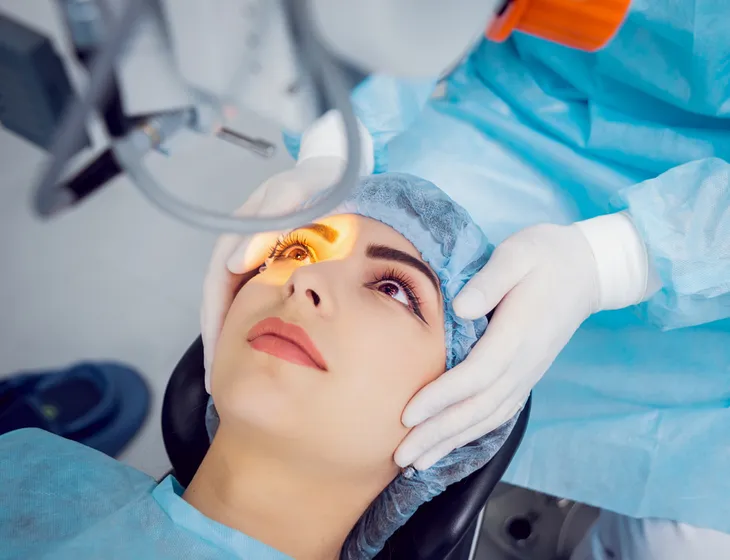Amblyopia, sometimes referred to as “lazy eye,” is a condition that emerges when the eye is out of sync with the brain, resulting in it lacking coordination with its partner eye. Although amblyopia can be present in both eyes, in most cases it’s limited to just one eye — hence the term “lazy eye” rather than “eyes.”
In some cases of lazy eye the affected eye can wander, meaning it will appear to look in one direction at one time and another direction later on. This can be confusing for anyone speaking to an individual with amblyopia, but the condition is certainly more difficult for the patient. Unsurprisingly, amblyopia can lead an individual to become highly self conscious about their appearance, leaving them vulnerable to a range of social and psychological disorders. To learn more about amblyopia and how it impacts the lives of those with it, read on.
1. It starts in childhood
In almost all cases of amblyopia, the problem emerges in the early stages of life, usually within the first few years. Diagnosing the problem early is absolutely crucial, as many experts believe it becomes extremely difficult to fix the problem once the patient completes their first decade of life.
Parents who suspect their child may have a problem with amblyopia are encouraged to speak with their family doctor or eye care professional at the first hint that lazy eye may be present. This will allow physicians time to properly diagnose the matter and set out a carefully detailed course of action for correcting the problem.
2. Treatment starts early
Generally speaking, medical experts specializing in the treatment of amblyopia agree that treatment needs to begin the moment the condition is detected. There are several key reasons for this position.
First, as time goes on a lazy eye can start to lose its vision; eventually, it may go completely blind. It can be very difficult to reverse course once this stage has been reached. Second, in time the eye may lose its depth perception, thereby affecting the overall vision of the patient. Finally, should the healthy eye become damaged for whatever reason, the lazy eye will be incapable of providing balance and compensating for vision loss.
3. Amblyopia is commonly confused with strabismus
When people talk about lazy eye, they often mean strabismus, which is characterized by wandering or misaligned eyes that do not suffer from loss of vision. In comparison, amblyopia involves loss of vision in one or more eye.
That said, amblyopia can eventually result in the onset of strabismus. Over time, a patient with amblyopia could find that their affected eye or eyes become misaligned. In most cases strabismus is associated with crossed eyes or drifting eyes, which can have a marked psychological impact on the affected individual. However, in cases where strabismus is present but amblyopia is not, the vision is not affected in any significant way.
4. Treatment rarely involves surgery
On the surface, it would appear the most direct and successful way to treat amblyopia, or lazy eye, would be to perform surgery. However, in most cases surgery is not an appropriate method of treatment for amblyopia. This sets amblyopia apart from strabismus, or wandering eye, which can (and often is) treated with surgery.
Instead, the ideal course of action involves treating the patient while they are still very young — under age 6. After this age the chance of success goes down significantly. To treat the condition in young patients, most eye specialists will recommend the usage of special glasses or eye patches that can help the patient overcome the problem.
5. Lazy eye surgery
Contrary to popular opinion, amblyopia is rarely treated through surgery. Instead, this type of surgery is typically reserved for patients with strabismus, a similar though separate condition that involves a wandering eye which does not suffer from any vision problems.
Should surgery be recommended for a lazy eye, it will take one of two forms. The first is recession, which involves detaching the eye muscle and then reattaching it a greater distance from the front of the eye. If successful, this procedure can weaken the muscle and help align the eyes. The second procedure is known as resection, and involves removing a part of the eye muscle in an attempt to strengthen it, thereby encouraging proper alignment of the eyes.
6. Surgery recovery time
Should a patient be selected for lazy eye surgery — most likely for strabismus rather than amblyopia — there’s good news: the procedure has a very high success rate in the United States, where more than a million eye alignment operations take place on an annual basis. This makes it one of America’s most popular eye-related surgical procedures.
Following the surgery, most patients will be able to go home rather than having to stay in the hospital overnight. Children who undergo this kind of surgery can usually return to school within a few days, while adults may require slightly more recovery time. Common side effects include double vision, blurriness, and general soreness in the affected eye. Follow-up visits to the ophthalmologist who performed the procedure are highly recommended to ensure the eye is healing properly.





